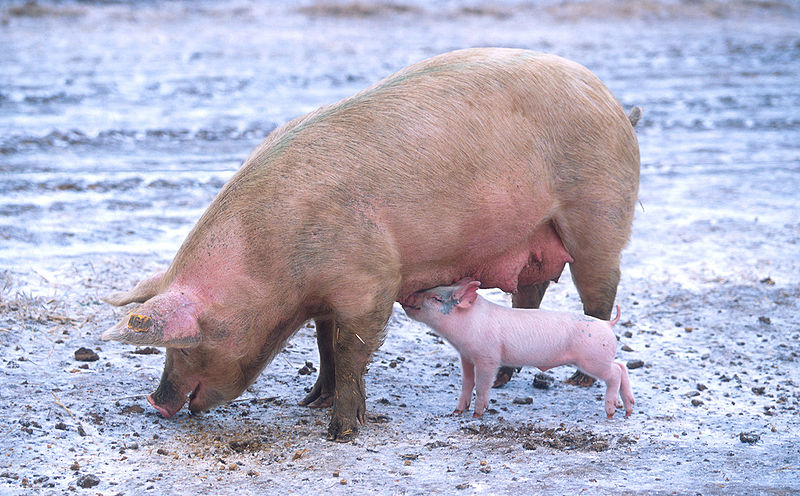Scientists monitoring pigs in Hong Kong have spotted human H1N1 swine flu rearranging its genes.
Writing in Science this week, Hong Kong University researcher Dhanasekaran Vijaykrishna and his colleagues describe how, by monitoring samples from pigs sent for slaughter, in January 2010 they picked up a new strain of swine flu with unknown pandemic potential. Owing to the perceived threat that pigs pose by acting as molecular mixing vessels permitting swine, bird and human flu strains to swap genetic material, the team have been monitoring the Hong Kong abbatoir for over ten years.
 Between January 2009 and February 2010 they picked up 32 cases of flu amongst pigs, including classical swine flu strains and (since October 2009) cases of the H1N1 swine flu that caused the human pandemic.
Between January 2009 and February 2010 they picked up 32 cases of flu amongst pigs, including classical swine flu strains and (since October 2009) cases of the H1N1 swine flu that caused the human pandemic.
But the virus detected in January was different. It contained the core molecular workings of a circulating strain of swine flu but also had acquired the haemagglutinin (H) surface coat of the human H1N1 pandemic strain. This shows that the human pandemic strain, when it enters pigs, can clearly "reassort" with other pig flu viruses, potentially generating novel pandemic strains that might have enhanced virulence amongst humans.
Tests carried out by the researchers showed that the new strain could transmit readily between the pigs, indicating that it was fully infectious, although it tended to produce a mild illness.
Nevertheless, this observation should serve as a warning, say the researchers, that more widespread surveillance of pigs is crucial in order to help us to predict and mitigate potential future threats to public health.










Comments
Add a comment